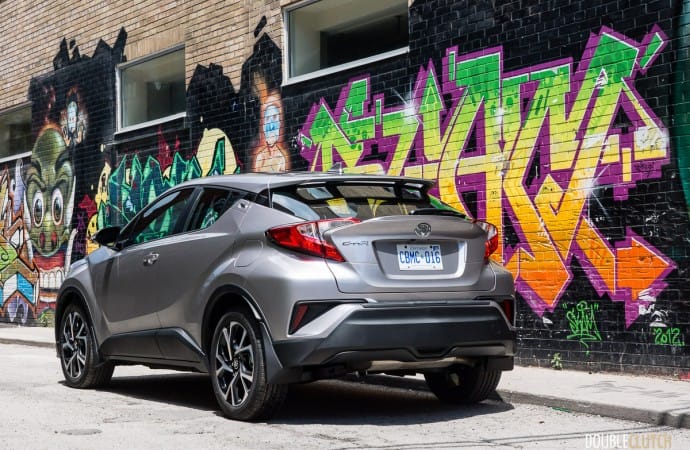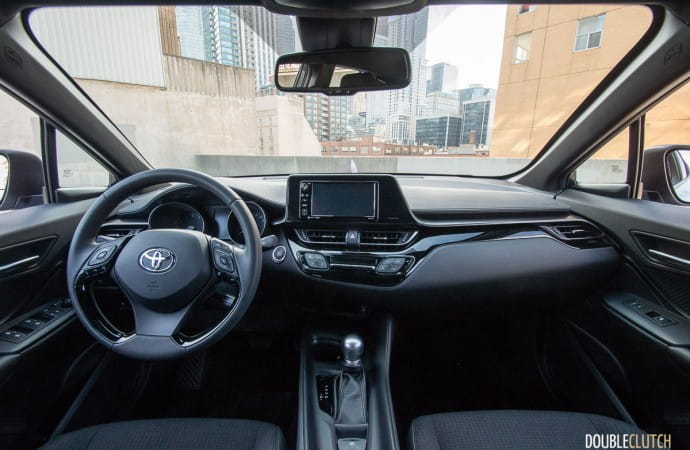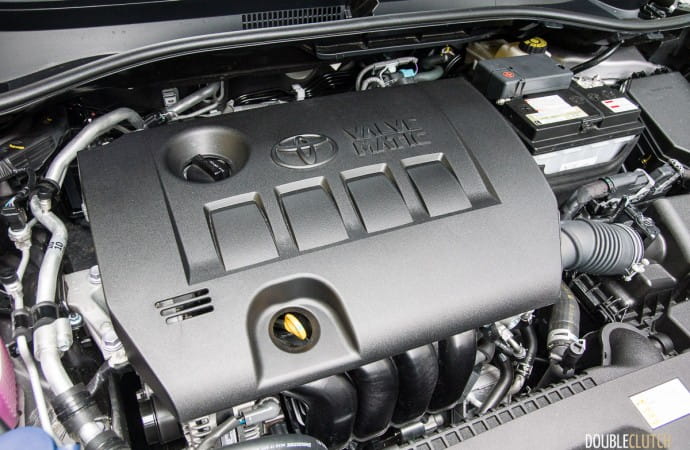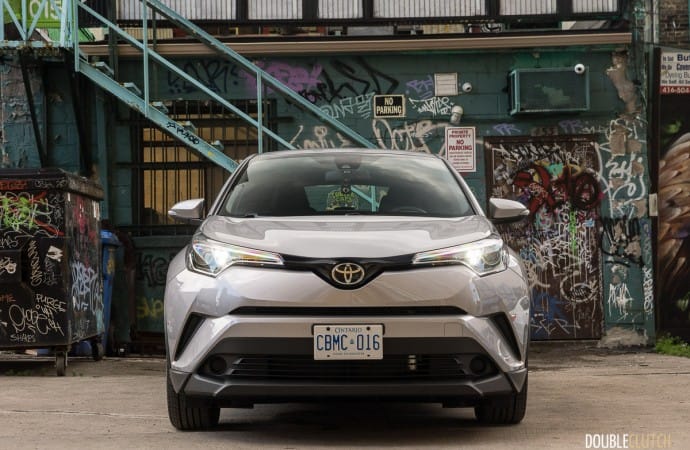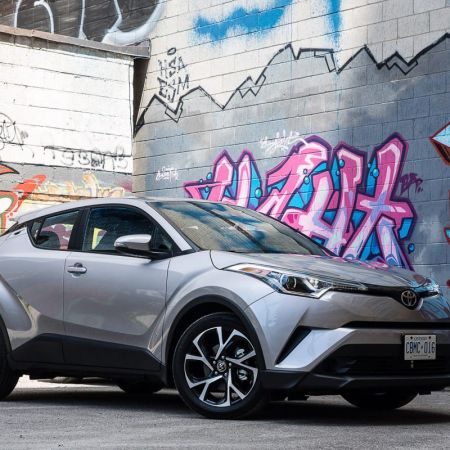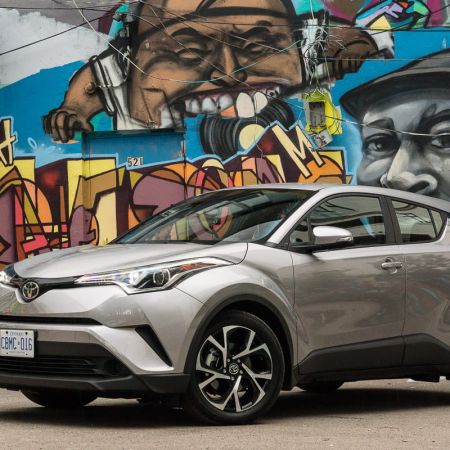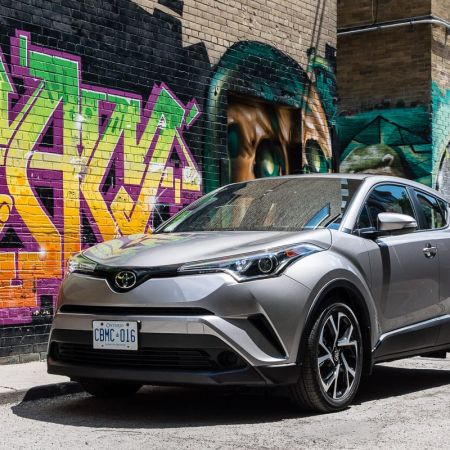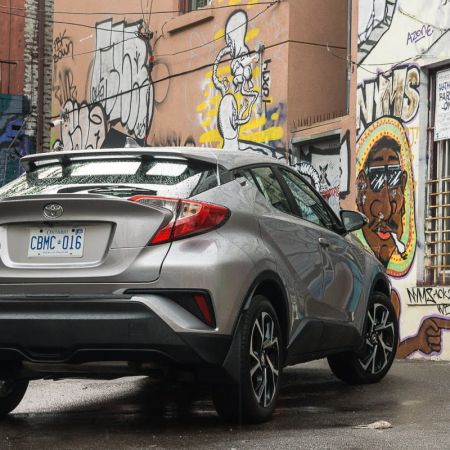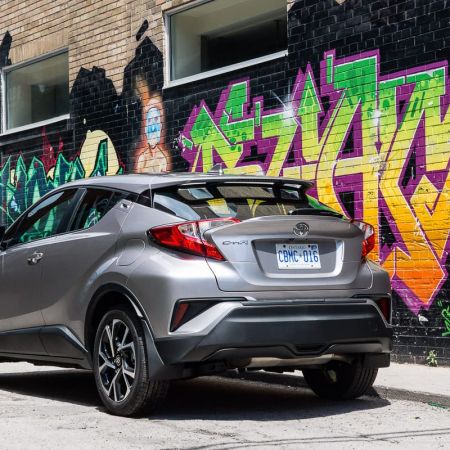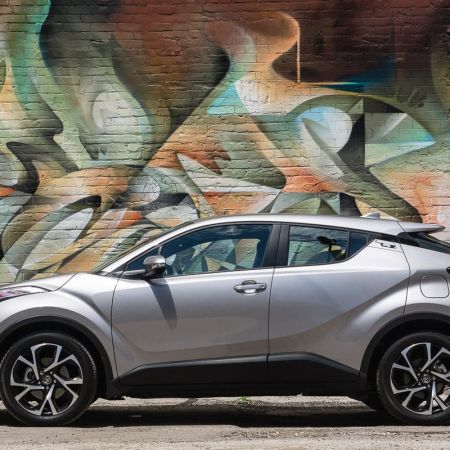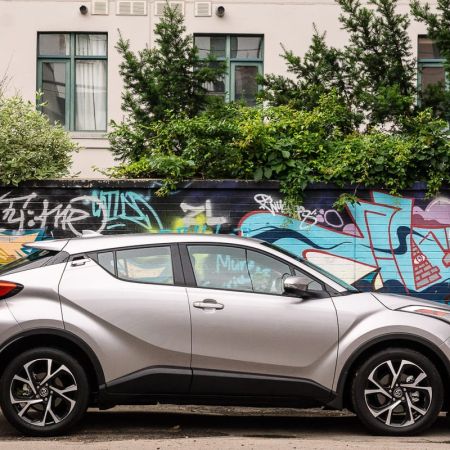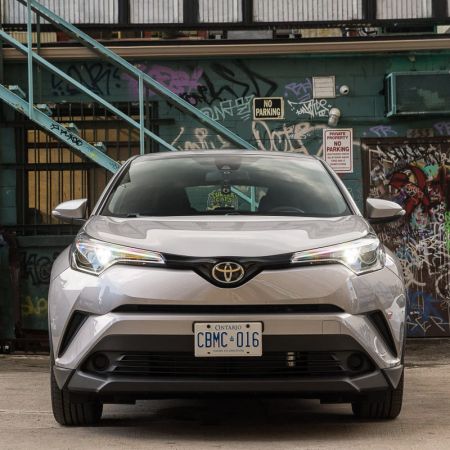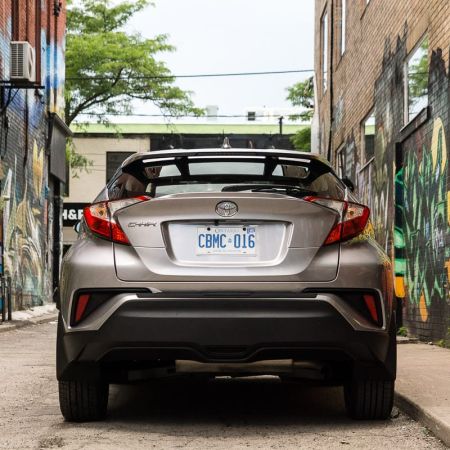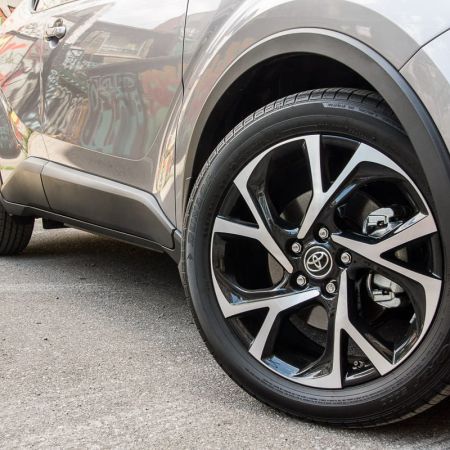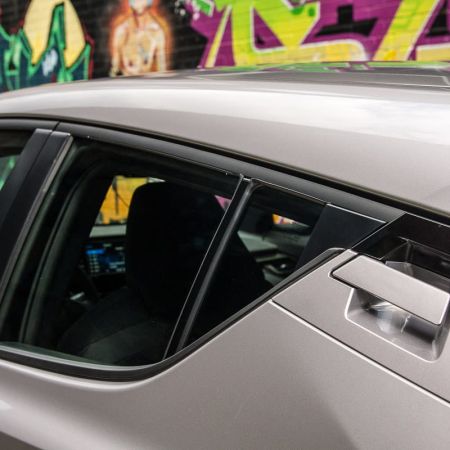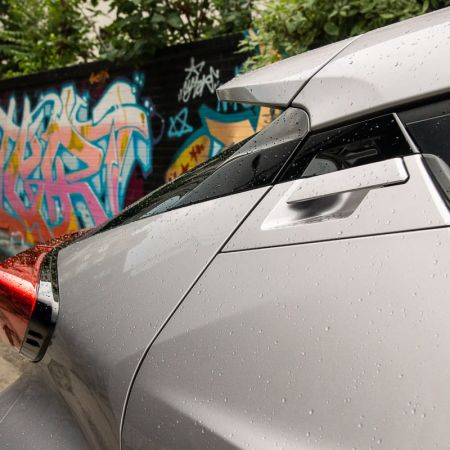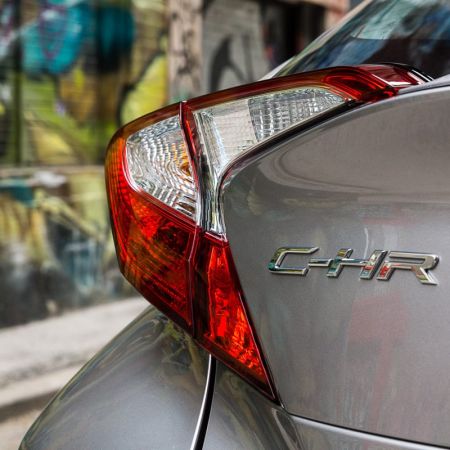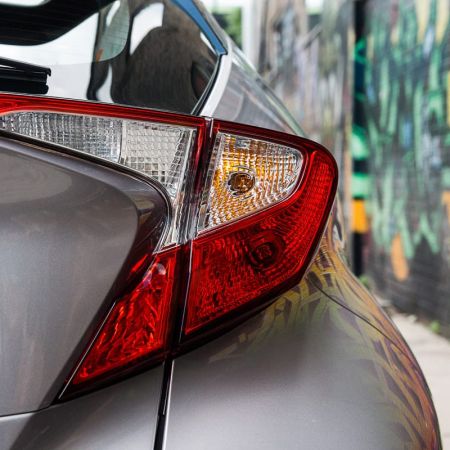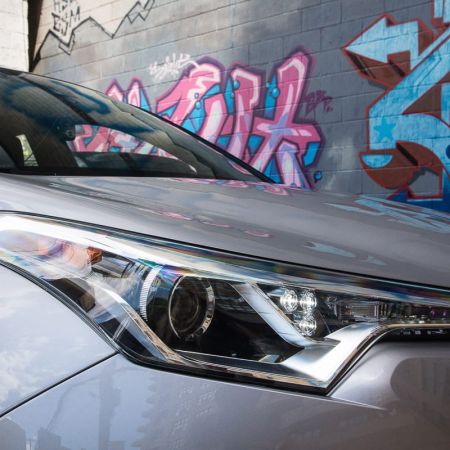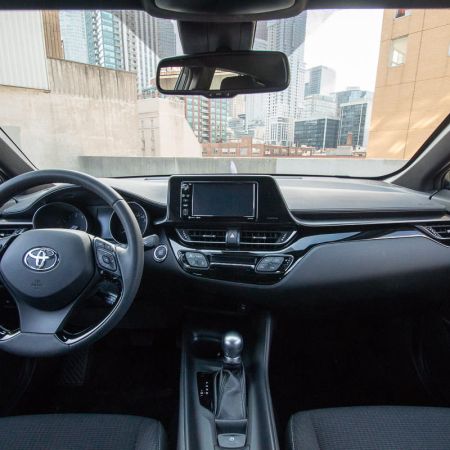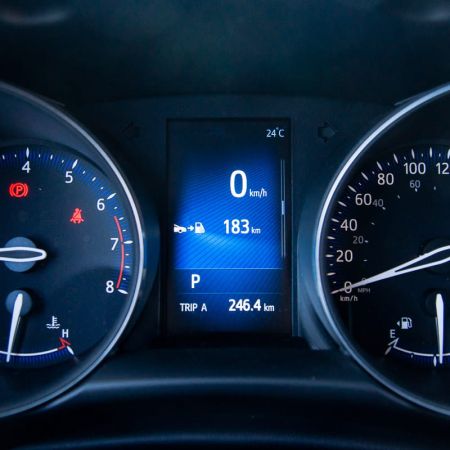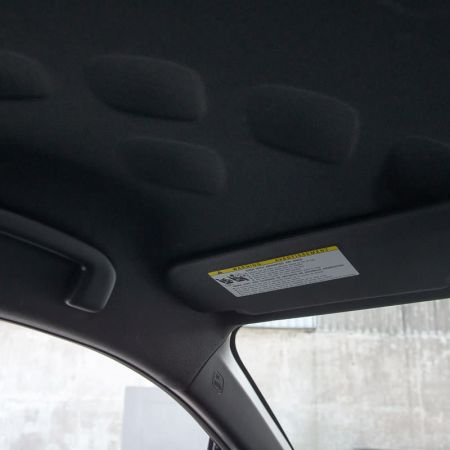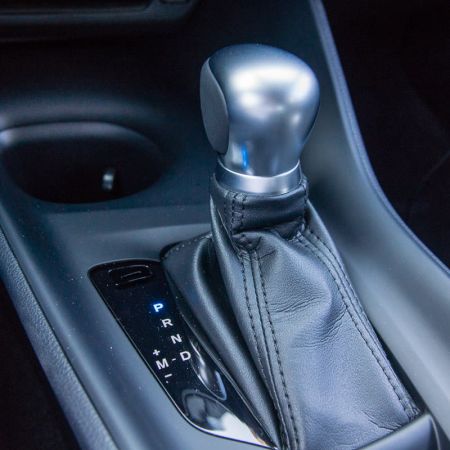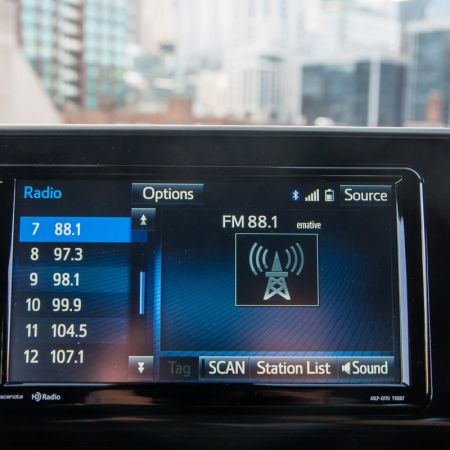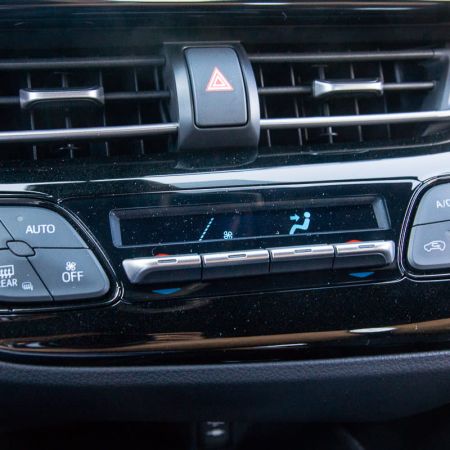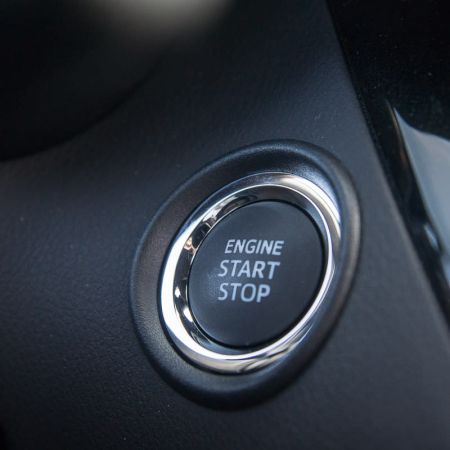Automaker Toyota tried quite hard to appeal towards younger customers with the Scion brand. It was believed that the latest generation of buyers weren’t interested with the Toyota brand, owing to its dedication towards high-volume mainstream vehicles like the Corolla and Camry. The strategy was to bring cars over from Japan, like the Scion xA, the super-boxy xB, and little iQ, and market them as funky, and practical urban runabouts. The brand gained some traction, but for the most part, occupied just a small corner of the crowded neighbourhood Toyota dealer. The Scion tC was a decent Camry-powered daily driver, but the real success of the brand came when the FR-S was released. The back-to-basics rear-drive sports coupe ignited Toyota’s focus on the driving experience, and kick-started a whole new family of enthusiastic owners.
After some success with the FR-S and the Scion iM (reviewed here), the suits decided it was time to shutter the Scion brand. Just about everybody wondered what would happen to existing models, but the transition to the Toyota brand has gone quite smoothly – with the Toyota 86 (reviewed here) and Corolla iM, respectively. One of the products in the timeline was the Scion C-HR. This name is an abbreviation of what could be several names: Compact High Rider, Cross Hatch Runabout, and Coupe High-Rider. One version of the concept was introduced to North America at the 2015 Los Angeles Auto Show, and during the whole theatre of Scion’s demise, the C-HR became a Toyota. Now ready for production, Toyota Canada sent over a “Silver Knockout Metallic” 2018 Toyota C-HR for a week-long evaluation.
Anybody who has kept up with Toyota’s new product lineup will have heard of the C-HR. At first, it may just seem like yet another subcompact crossover, but the C-HR brings its own unique personality to the table. The former Scion brand seemed to have quite a bit of latitude in how their vehicles were styled, and this has carried over to the C-HR. Its styling is easily the headline feature of this little runabout, but what about the hard bits underneath? It is anything but status quo, and Toyota knows it.
The Toyota C-HR is made up of a number of unique design elements, all of which come together onto a fairly small body. The theme, in this case, is the coupe-inspired “Distinctive Diamond”. As a result, there’s a lot going on – you may not be able to initially focus on any one element. The window line in the rear door sweeps up significantly to join the high-mounted door handle (which may be tough for kids to reach). The exaggerated wheel arches draw attention to the optional 18” wheels on this tester, and an exaggerated body line runs from the front wheel arch, scalloping out the side door skins, and heads toward the high-mounted taillights. Take a close look at the fuel tank door on the driver’s side, and see the contour it needs to follow as several character lines pass right through it. From the rear, the taillight modules somewhat resemble the Honda Civic Hatchback (reviewed here).
There’s a lot more to be discussed in regards to styling, but the bottom line is, the C-HR is a polarizing design, and Toyota needs to be commended for this reason. It is expected that not everybody will be on board with the styling language, but there’s one thing that prospective consumers can do to enhance the C-HR’s overall look: the colour. Out of nine colours available, three of them feature a two-tone design, with the roof, A-pillar, and side mirrors painted white. The contrast afforded by the two-tone paint scheme really makes the C-HR pop, and gives your eyes yet another thing to process when you look at the C-HR. What’s interesting is that you can’t get fog lights from the factory on any trim of the C-HR – they are dealer-installed options, even though the bumper has cutouts for where the hardware would go.
The interior of the Toyota C-HR is fresh, but it’s easy to see how it’s not as funky as the exterior. Aside from the diamond-shaped scallops cut into the roof-liner material, the C-HR’s interior is a functional place to be, with intuitive ergonomics and excellent assembly quality. At the top of the centre stack, a 7-inch touchscreen controls Bluetooth phone integration and infotainment – Android Auto and Apple CarPlay are still not offered on anything Toyota makes, unfortunately. Seat bolstering is surprisingly good – these aren’t the typical flat seats you’d expect in a Corolla (reviewed here). Space for the driver and front passenger is good, but passengers in the rear may find their heads brushing up against the ceiling. Furthermore, thanks to the swooping doorsill, outward visibility for the two rear passengers is limited, unless one leans forward to peer out the window. Chalking it up to a world-market quirk; the rear camera doesn’t actually appear on the infotainment interface. Instead, it appears as a little square of video output, embedded into the rear view mirror.
From the driver’s seat, forward visibility is excellent, with a large windshield and glass areas on both sides. Rearward and blind spot visibility is definitely impacted by the way the door is cut and how thick the C-pillar is. Thankfully, the Blind Spot Monitor (BSM) is available as part of the XLE Premium Package. Cargo space is reasonably competitive for the subcompact crossover segment, but the aggressive rake of the rear hatch cuts into the vertical space one would normally have access to in a more “conventionally-shaped” five-door vehicle.
Built on the new TNGA platform and methodology, the C-HR is one of the first of what will be many vehicles built on this flexible system. Under the hood, is a mainstream powertrain that works in the most “Toyota” of ways – adequate and unobtrusive. Displacing 2.0L, the gasoline four-cylinder (codenamed 3ZR-FAE) features Toyota’s Valvematic system that provides finer control over the air-fuel mixture than a typical single throttle-body plate can handle. Horsepower is rated at 144 horsepower at 6100RPM and torque is 139 lb-ft. at 3800RPM.
This isn’t a sports car engine, but one that moves the C-HR with reasonable authority, thanks to the standard CVT. The only transmission available, the CVT is a good one – it stays out of your way in typical usage, but responds quickly when needed, shifting to a lower ratio when you need more acceleration. It is possible to get the engine to really scream at high RPMs, but you’d need to have the accelerator pedal depressed almost completely. The CVT also provides a manual mode, which offers finer control, but it’s really best to let the transmission figure everything out for you. Like on other gasoline-powered Toyotas with CVTs: you’re able to force “seventh” gear, and it will not downshift to a lower ratio, regardless of what the accelerator pedal is doing.
Power is sent to the front wheels, and this is where I can see the C-HR falling somewhat short in today’s information-focused world. Prospective customers love to make comparisons on spec-sheet line items, and the C-HR is one of the few in this class that doesn’t offer all-wheel drive. We are of the belief that front-wheel drive paired up with a set of winter tires (such as the Michelin X-Ice XI3) will provide better wintertime traction than your average all-wheel drive crossover with all-season tires. However, not making all-wheel drive available reduces the C-HR’s appeal to Canadians. Competitors such as the Mazda CX-3, Nissan Juke and Qashqai (reviewed here), and Honda’s HR-V all offer all-wheel drive, and as such, enjoy a much broader appeal right out of the gate.
Thanks to the efficient powertrain, Toyota rates the C-HR at 8.7L/100km in the city, 7.5L/100km on the highway, and 8.2L/100km in a combined cycle. During my week of mixed driving, I ended up with an indicated average of 8.2L/100km, which lines up exactly with Toyota’s estimates. The C-HR is perfectly happy with regular 87-octane fuel, and the tank will hold 53L of it. There is no idle start-stop system employed here, and the engine utilizes a traditional port fuel injection setup – neither of which are bad things.
Toyota continues the Scion-method of affordable pricing, as the C-HR starts at $24,690. You still get a laundry list of standard equipment, such as the CVT, air conditioning, heated front seats, and Toyota’s comprehensive “Safety Sense P” active safety system (including adaptive radar cruise control). There is only one option package available, the $1,600 XLE Premium Package, which adds Toyota’s Smart Key keyless access, push-button start, 18” wheels, and power folding mirrors. It would have been nice to see full-LED headlamps like the Corolla has, but LED daytime-running lights are all we get. With the Premium Package added, the as-tested price comes to $26,290, before taxes and additional fees.
In the interest of real-world science, I brought the C-HR to Toronto’s Graffiti Alley on a Saturday afternoon. For those who don’t know: Graffiti Alley is in the heart of one of the hippest strips of the downtown area. Young people are everywhere, whether they are on patios drinking trendy lattes, window shopping the latest hipster fashion, or eating some of the best multicultural food you can find anywhere. As I was quickly photographing the C-HR, several people passing by expressed their approval, and some were even impressed that Toyota would build such a vehicle. It’s a little snippet of what the market might be, but I’m sure it is music to Toyota’s ears.
The 2018 Toyota C-HR is almost a rebuttal for all of the locker room talk alleging that Toyota is only good for building beige appliances. While it’s important to remember the existence of Lexus, the C-HR exists to add a lot of funkiness and originality to the driver who is looking for something a bit more interesting than a Corolla. It also excels at giving drivers the “command driving position” that is very much in demand, while retaining a car-like driving experience. Overall handling feels closer to that of a small hatchback, rather than a full-fledged crossover. While products like the Corolla iM exist to give shoppers versatility, the C-HR is the successful Scion-transplant for those looking for a more youthful and extroverted appearance. Just make sure you’re okay with front-wheel drive, and definitely opt for one of the two-tone paint schemes.


